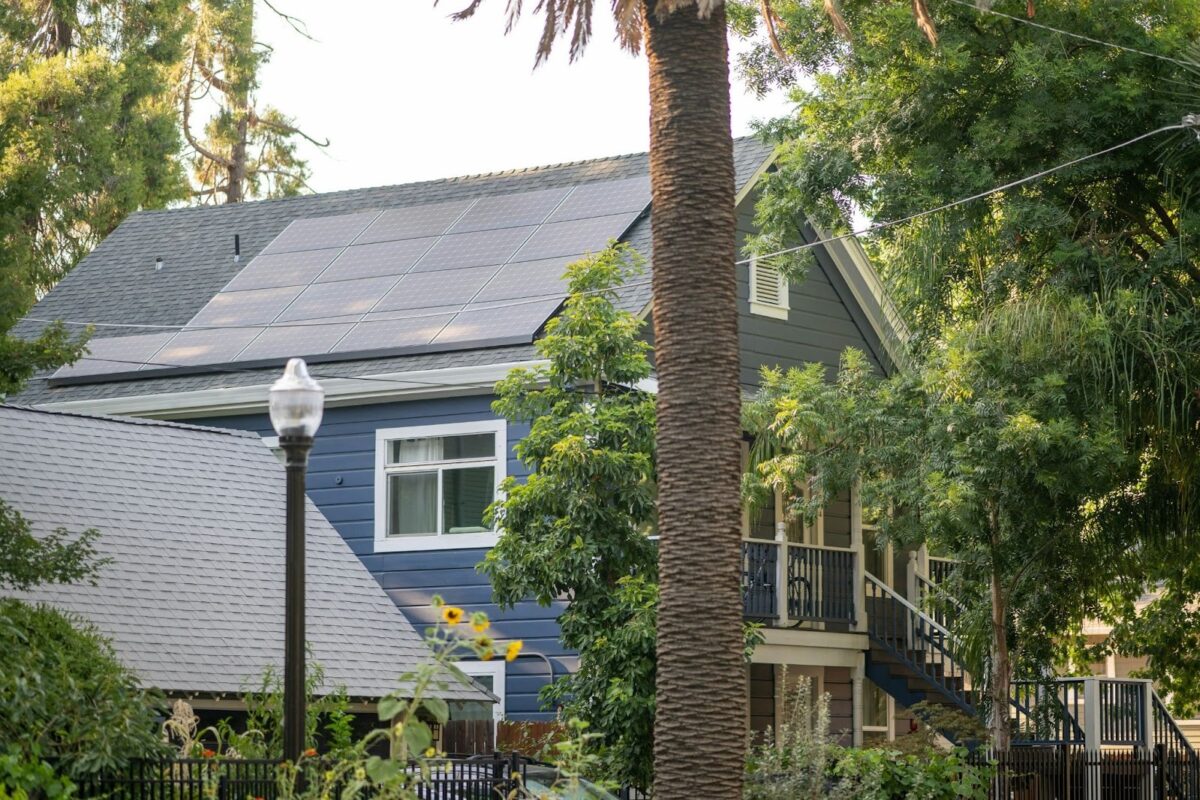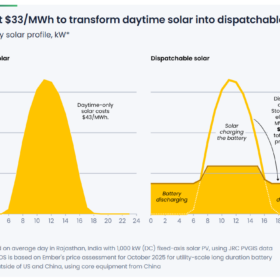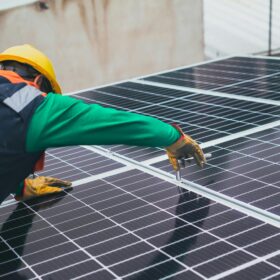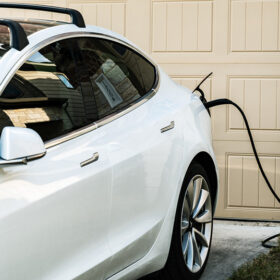Solar trackers are increasingly being deployed in more challenging environments than ever before, including deserts with high ultraviolet (UV) exposure, coastal regions, alkaline soils, and wind zones that regularly challenge structural limits.
While the industry often focuses on software, sensors, and control systems, the most frequent failures I observe stem from less apparent sources: the materials and coatings that comprise the structure itself. Corrosion does not manifest abruptly; however, it invariably becomes evident over time. When it does, it subtly alters the economic viability of a solar project.
Corrosion
In my professional experience supporting large-scale solar structures across the United States, I have observed recurring early warning indicators, including pitting along fasteners, coating deterioration around welds, and uniform thinning of galvanizing in reactive soils. These issues seldom result from a sudden failure; instead, they gradually reduce structural stiffness, impair torque transfer, and increase the vulnerability of trackers during severe weather. Consequently, the integration of advanced materials and modern coating systems has become an essential, non-optional enhancement. The durability of trackers is fundamentally determined at the metallurgical level long before the product is installed in the field.
High-strength steels
My experience with High-Strength Low Alloy (HSLA) steels in the manufacturing of torque tubes demonstrates how contemporary micro-alloyed steels can substantially enhance survivability.
- Increased yield and tensile strength diminish permanent deformation during wind incidents.
- Nickel microalloying enhances toughness in colder climates.
- Enhanced weldability reduces failures in the heat-affected zone, which frequently originate in tubular tracker components.
Transitioning to HSLA is not merely over-engineering; it’s a strategic initiative to ensure future resilience and long-term benefits.
Next-generation coatings
I’ve supported multiple projects evaluating the transition from traditional galvanizing to aluminum-zinc-magnesium (AZM) coatings. The field data is consistent with what we know metallurgically:
- AZM creates protective, stable corrosion layers that significantly reduce thickness loss.
- Magnesium-rich phases self-heal edges and scratches, a significant advantage for long, thin-walled tracker tubes.
- AZM performs better in coastal, desert, and alkaline soil environments, reducing long-term O&M costs.
For an industry increasingly operating in corrosive environments, these properties are not luxuries; they are strategic necessities that empower us to overcome challenges.
Welds and fasteners
Across both automotive and solar manufacturing, welds remain the most predictable point of vulnerability. Heat destroys protective layers, alters microstructure, and creates localized corrosion risks. Over decades of cyclic loading in trackers, this becomes a durability liability.
My evaluations of weld zones through microscopy, hardness testing, and fracture analysis reinforce the need for:
- Metallizing or post-weld coating restoration.
- Duplex systems that combine galvanizing with topcoats.
- Matching fastener materials to eliminate galvanic corrosion.
These steps significantly extend structural life, although adoption across the solar sector remains inconsistent.
These lessons apply across heavy manufacturing sectors that rely on coated steel structures, where weld quality, material compatibility, and surface protection directly determine long-term performance.
Climate extremes
Beyond solar, these durability challenges reflect a broader shift occurring across industrial manufacturing. Sectors such as automotive, heavy equipment, oil and gas, and structural fabrication are confronting the same pressures: more extreme operating environments, tighter reliability expectations, and reduced tolerance for field failures. As materials and coated steel systems are pushed into harsher settings, the ability to engineer long-term durability at the production level is becoming a defining competitive advantage.
From the United States to Mexico and India, I have seen trackers facing conditions far more severe than those assumed in earlier design models:
- Freeze–thaw cycles that accelerate coating delamination.
- High-UV exposure that degrades polymers and resins.
- Strong winds that push structures to their flexural limits.
- Soil chemistries that rapidly consume under-specification coatings.
The assumptions of ten to fifteen years ago, when the climate was less extreme and the technology less advanced, no longer apply. Trackers built for yesterday’s climate will not survive tomorrow’s, as the climate is becoming more extreme and the technology more demanding. This shift in climate and technology necessitates a change in the materials and engineering used in solar trackers.
Durability
The solar industry is shifting from a capital-intensive build mindset to one focused on long-term asset performance. When you expect a structure to operate for thirty to forty years, material decisions stop being a line-item cost and become a strategic investment.
A coating that fails five years early is not a technical issue; it is a financial liability.
A torque tube that deforms during extreme wind is not a minor oversight; it is a multimillion-dollar outage.
Integrating metallurgical discipline, including corrosion modeling, microstructure control, and weld quality management, is how developers protect both uptime and long-term returns.
Elevate materials science
The industry continues to invest heavily in tracker controls, software intelligence, and performance optimization. These advancements matter, but none of them can compensate for structural degradation.
If solar assets are expected to last 30 to 40 years, materials engineering must be given the same level of priority as electrical design and control systems.
This requires:
- Specifying HSLA steels when structural demands justify their use.
- Adopting AZM and duplex coatings as the new baseline.
- Raising weld-quality expectations and enforcing post-weld protection.
- Treating material selection as a long-term return-on-investment decision rather than a procurement checkbox.
Bottom line
Software can optimize performance; however, the selection of materials ultimately ensures longevity. The forthcoming advancements in solar reliability will be influenced not by more advanced trackers but by more judicious choices in steel, coatings, and welds. Suppose the industry desires assets to endure in a world increasingly characterized by environmental extremes. In that case, it must engineer durability at the materials level, as this constitutes the foundation of genuine long-term reliability.
The views and opinions expressed in this article are the author’s own, and do not necessarily reflect those held by pv magazine.
This content is protected by copyright and may not be reused. If you want to cooperate with us and would like to reuse some of our content, please contact: editors@pv-magazine.com.







By submitting this form you agree to pv magazine using your data for the purposes of publishing your comment.
Your personal data will only be disclosed or otherwise transmitted to third parties for the purposes of spam filtering or if this is necessary for technical maintenance of the website. Any other transfer to third parties will not take place unless this is justified on the basis of applicable data protection regulations or if pv magazine is legally obliged to do so.
You may revoke this consent at any time with effect for the future, in which case your personal data will be deleted immediately. Otherwise, your data will be deleted if pv magazine has processed your request or the purpose of data storage is fulfilled.
Further information on data privacy can be found in our Data Protection Policy.